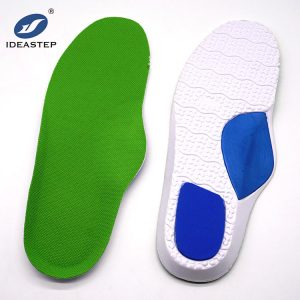
The choice of material for skiing insoles depends on individual preferences and specific foot needs. However, there are a few common materials that are often used in skiing insoles:
- EVA Foam: Ethylene-vinyl acetate (EVA) foam is a popular material for skiing insoles. It offers excellent cushioning, shock absorption, and support. EVA foam is lightweight, flexible, and molds well to the shape of the foot, providing a comfortable and customized fit.
- Polyurethane (PU) Foam: Polyurethane foam is another commonly used material for skiing insoles. It provides good support, durability, and responsiveness. PU foam has a slightly firmer feel compared to EVA foam, making it suitable for skiers who prefer a more stable and responsive platform.
- Gel: Gel inserts or pads are often incorporated into skiing insoles to provide additional cushioning and shock absorption. Gel is highly effective in absorbing impact forces and reducing pressure points, enhancing comfort and reducing fatigue during skiing.
- Cork: Cork is a natural material that is sometimes used in skiing insoles. It offers excellent support, moisture-wicking properties, and moldability. Cork insoles can provide a customized fit and help with foot stabilization and alignment.
- Carbon Fiber: Carbon fiber is a lightweight and rigid material that is used in high-performance skiing insoles. It offers excellent power transmission, stability, and responsiveness. Carbon fiber insoles are often preferred by advanced or competitive skiers who prioritize maximum performance.
It is important to note that the best material for skiing insoles may vary depending on factors such as foot shape, skiing style, and personal preferences. It is recommended to try different materials and consult with a professional boot fitter to determine the most suitable material for your specific needs.
If you are interested in skiing insoles, you can look at this page: https://www.aideastep.com/product/skiing-insole/.
